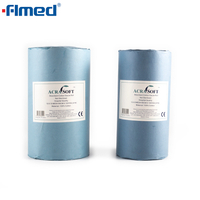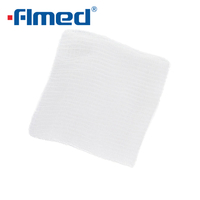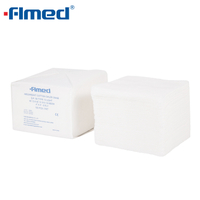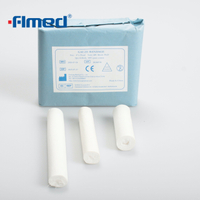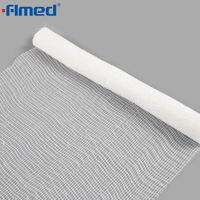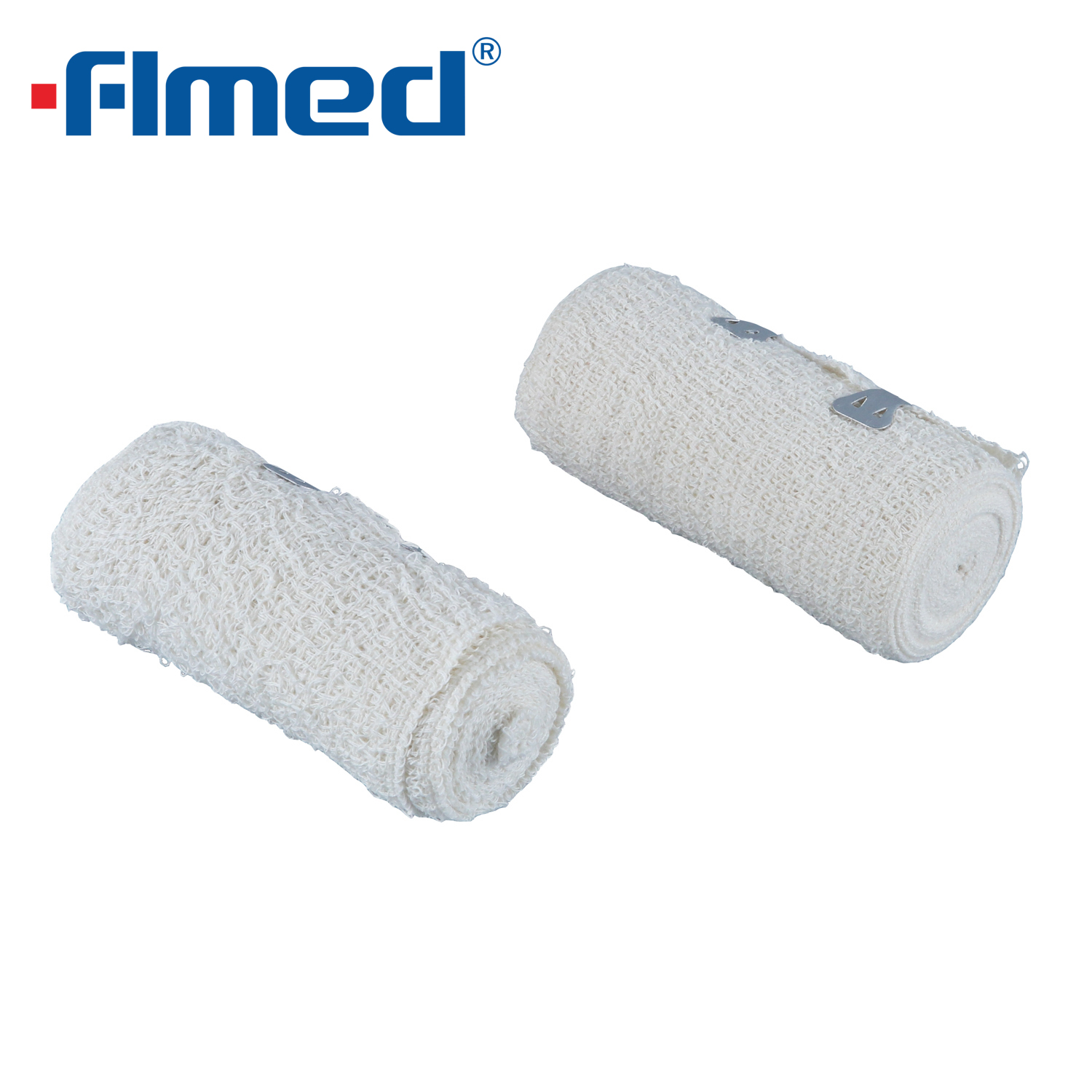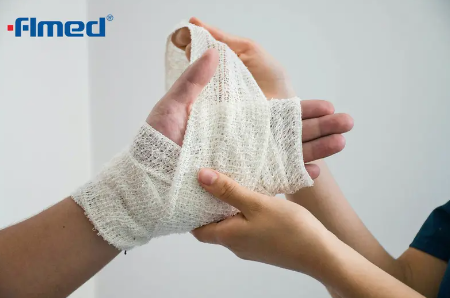
Medical gauze is one of the most commonly used materials in healthcare for wound care, dressing, and first aid. Available in both sterile and non-sterile varieties, each type of gauze serves a unique function and is essential for different medical situations. In this article, we will discuss the differences between sterile and non-sterile medical gauze, when and why to use each type, and the key factors that healthcare professionals must consider when making this important decision.
What is Medical Gauze?
Medical gauze is a soft, woven material that is highly absorbent, making it ideal for absorbing fluids from wounds. It is typically made of cotton or synthetic materials like rayon. Medical gauze is most commonly used in the form of pads, sponges, or rolls, depending on the specific need. It helps keep the wound clean, reduces the risk of infection, and promotes faster healing by creating an optimal healing environment.
Gauze can be classified into two categories: sterile and non-sterile. The primary difference between the two lies in the way they are treated before use. Sterile gauze undergoes a sterilization process to eliminate all microorganisms, ensuring it is free from harmful bacteria and viruses. Non-sterile gauze, on the other hand, does not undergo this process and is intended for use in situations where sterility is not a primary concern.
Sterile Medical Gauze: When and Why to Use It
Sterile gauze is an essential component in the management of open wounds, surgical incisions, and burns. It is commonly used in healthcare settings, particularly in surgeries, emergency situations, and other medical treatments that involve invasive procedures. The following are key reasons and scenarios where sterile gauze is critical:
1. Preventing Infection in Open Wounds
Sterile gauze is primarily used to dress open wounds and surgical sites to prevent infection. Open wounds are vulnerable to external contaminants, and using sterile gauze provides a protective barrier that prevents bacteria from entering the wound. This is particularly important in surgeries, where the skin is intentionally cut, and there is a higher risk of infection. The sterile gauze ensures that the wound remains clean and protected during the healing process.
2. Post-Surgical Care
After surgery, the wound must be carefully managed to reduce the risk of complications, including infection and delayed healing. Sterile gauze is used to cover surgical incisions, absorb any drainage or exudate, and help prevent pathogens from entering the wound. It provides the necessary environment for healing while reducing the risk of post-operative infections.
For example, after a cesarean section or appendectomy, sterilegauze is used to cover the wound and keep it sterile while allowing for proper drainage. Additionally, since sterile gauze is free from harmful microorganisms, it minimizes the chances of introducing bacteria to the wound, which is crucial in the delicate post-surgical phase.
3. Burn Wounds
Sterile gauze is commonly used in the treatment of burn wounds. Burn injuries are especially susceptible to infection due to the damage to the skin’s protective barrier. The use of sterile gauze ensures that the wound is kept clean and protected from contaminants, promoting faster healing and minimizing scarring. It is particularly essential in cases of second-degree and third-degree burns, where the risk of infection is higher.
4. Critical in Sterile Environments
In medical environments where cleanliness and sterility are crucial, such as operating rooms, sterile gauze is the preferred choice. The sterile nature of the gauze ensures that no harmful bacteria or pathogens are introduced into the body during surgical procedures or wound care. Hospitals and clinics rely on sterile gauze to maintain a sterile environment, which is vital for preventing healthcare-associated infections (HAIs).
5. Ensuring the Safe Healing of High-Risk Wounds
Certain wounds, like those caused by traumatic injuries, surgical procedures, or diabetic ulcers, have a higher risk of complications. Sterile gauze is crucial in these cases because it minimizes the risk of infection and other complications, ensuring proper healing. It helps manage the wound and absorbs excess fluids or exudates, promoting faster recovery without the risk of secondary infections.
![Medical Gauze Medical Gauze]()
Non-Sterile Medical Gauze: When and Why to Use It
Non-sterile gauze is typically used in situations where sterility is not a major concern. It is generally intended for dressing closed wounds, minor abrasions, or injuries that don't involve a high risk of infection. Non-sterile gauze is more commonly used in first aid kits,home care, or general wound care where the wound is not open or exposed to external pathogens.
1. Minor Cuts and Scrapes
Non-sterile gauze is often used to treat minor cuts, scrapes, or abrasions. These types of wounds do not pose a high risk of infection and do not require the strict sterility that is necessary for more serious wounds. In these cases, non-sterile gauze is sufficient to cover the wound, absorb any exudate, and protect it from further injury.
For example, if someone experiences a small cut from a paper or a mild abrasion while gardening, non-sterile gauze can be used to dress the wound. Since the skin is intact and the risk of infection is low, non-sterile gauze is a practical and cost-effective option.
2. Closed Wounds
For closed wounds, such as bruises or small, non-open injuries, non-sterile gauze is often used. These wounds do not require the level of protection that open wounds or surgical sites demand. Non-sterile gauze can be used to apply light pressure, absorb any minor bleeding, and keep the area protected while it heals.
3. Cost-Effectiveness
Non-sterile gauze is much more affordable than sterile gauze, making it an excellent choice for non-critical wound care. It is often used for dressing minor injuries or areas of the body where there is a lower risk of contamination. In settings such as home care, where the wounds being treated are not at high risk of infection, non-sterile gauze provides a cost-effective solution for dressing and absorbing fluids.
4. Convenience in Everyday Use
Since non-sterile gauze is more readily available and less expensive, it is often preferred for first aid kits or routine care. When someone sustains a small injury while at home, in the workplace, or while engaging in outdoor activities, non-sterile gauze provides a convenient option for covering the injury. It is easy to use and can be replaced as needed, without the concern of maintaining sterility.
5. Non-Invasive Procedures
Non-sterile gauze is commonly used in non-invasive medical procedures where the risk of infection is minimal. For example, non-sterile gauze may be used in situations like cleaning minor wounds, applying ointments, or for general hygienic purposes in home care settings. As these procedures don't expose the wound to bacteria or pathogens, non-sterile gauze is an ideal choice.
![Medical Gauze Medical Gauze]()
How to Choose Between Sterile and Non-Sterile Gauze
The decision to use sterile or non-sterile gauze depends largely on the type of injury and the level of infection risk. Here are some general guidelines:
For Open or Surgical Wounds: Always use sterile gauze to prevent infection and promote healing in surgical sites, open wounds, or deep injuries. This is especially important in hospitals and clinics where infection control is a priority.
For Minor Wounds or Closed Injuries: Non-sterile gauze is sufficient for treating minor cuts, abrasions, and closed wounds that have a low risk of infection. It can also be used for general wound care at home, provided the injury is not open or contaminated.
For High-Risk Areas (e.g., Burns, Diabetic Ulcers): Use sterile gauze for high-risk areas to prevent infection and complications. Wounds that are prone to infection or that are part of a chronic condition require sterile protection to ensure proper healing.
Conclusion:
Choosing the right type of medical gauze is crucial in ensuring proper wound healing and preventing infections. Sterile gauze is essential for open wounds, surgical sites, burns, and any injury where the risk of infection is high. It provides a clean, protected environment that allows the wound to heal without contamination. On the other hand, non-sterile gauze is perfect for minor wounds, closed injuries, and everyday care where sterility is not as critical.
For healthcare professionals or individuals in need of reliable and high-quality gauze, Forlong Medical Co., Ltd. offers a comprehensive range of sterile and non-sterile gauze products designed to meet all wound care needs. Whether you're dealing with a minor abrasion or a post-surgical wound, Forlong Medical ensures that you have the right materials to promote healing and patient safety. To learn more about their products or place an order, visit Forlong Medical Co., Ltd. or contact their team for expert advice and assistance.

 English
English
